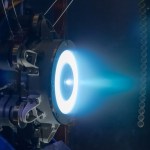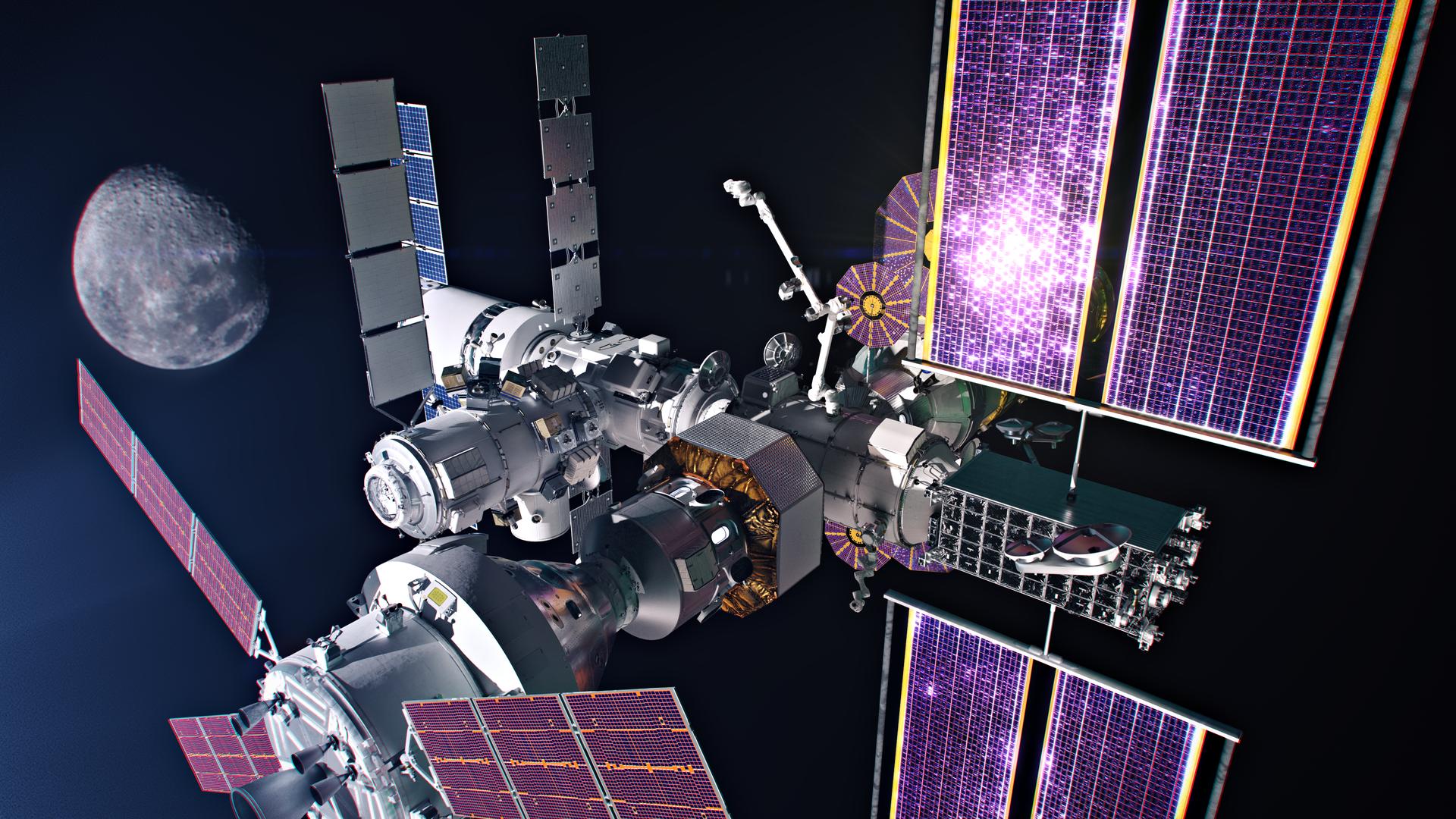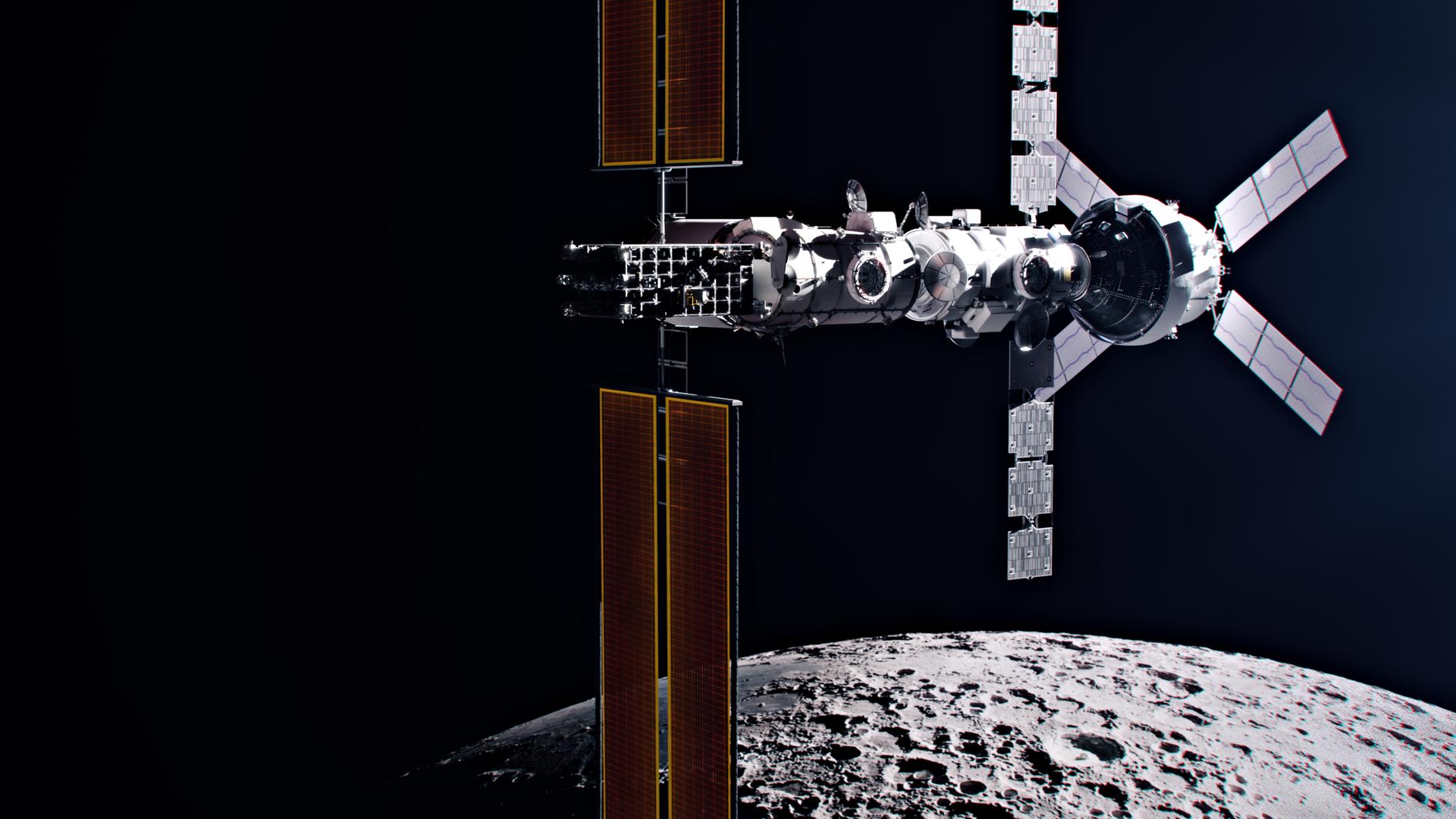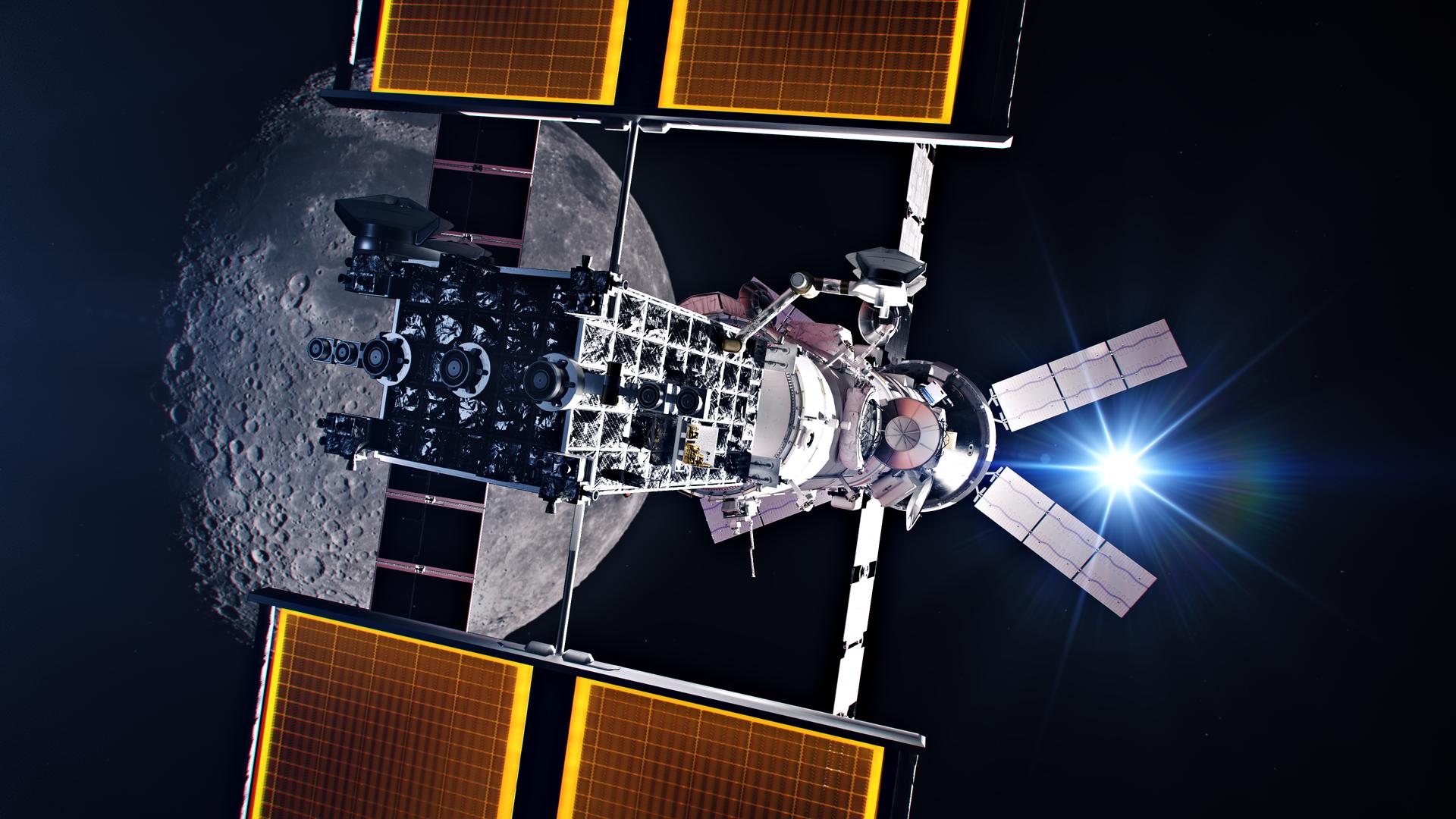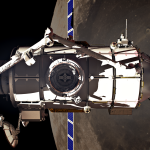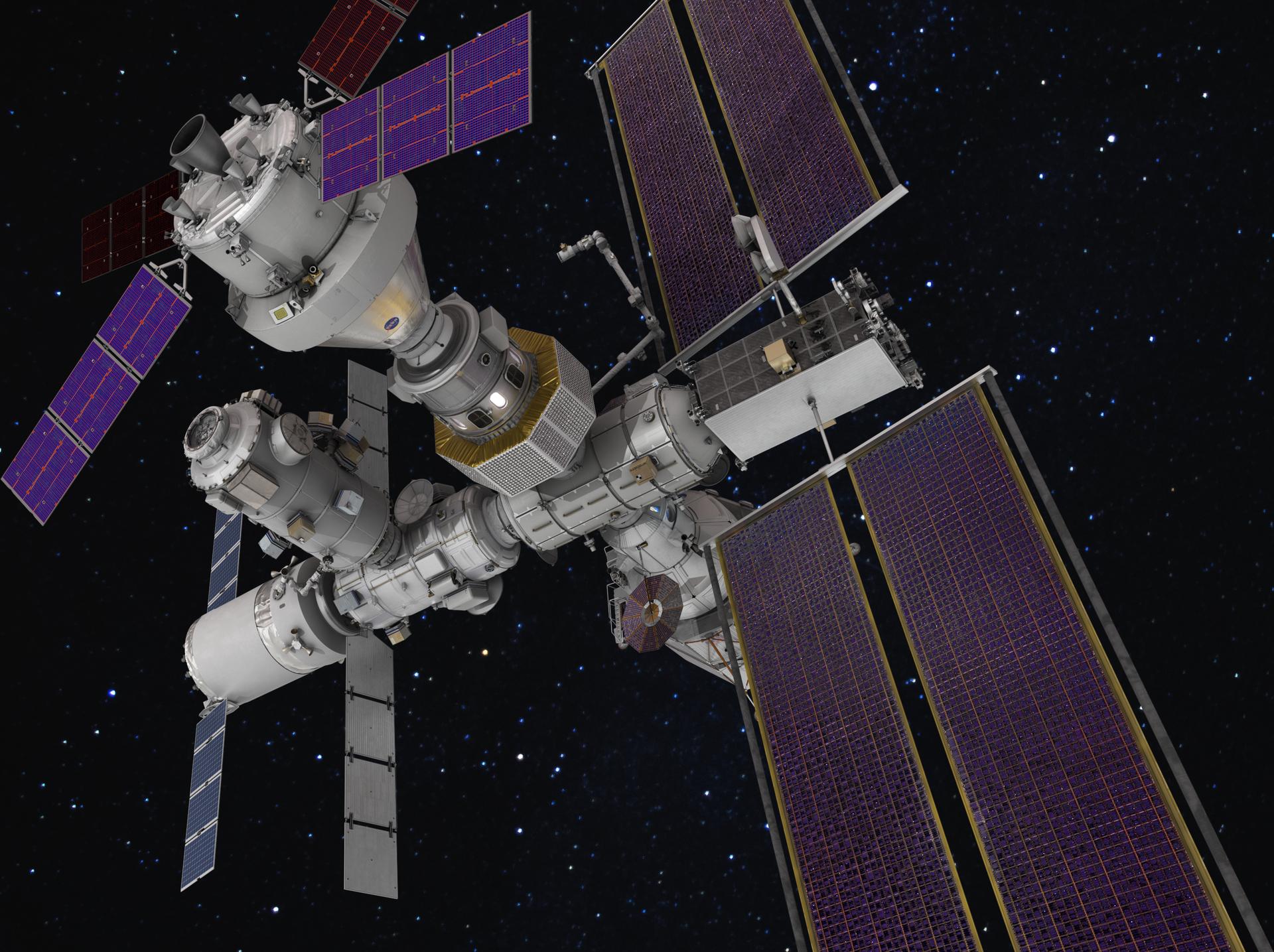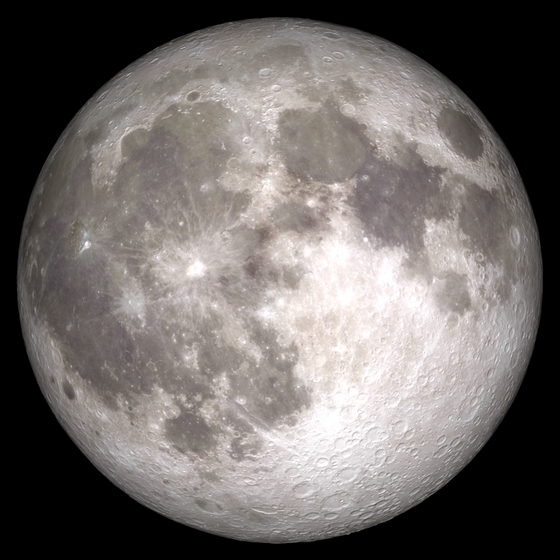Gateway By the numbers
General
What is Gateway?
Gateway is a next-generation space station that will orbit the Moon. It will enable a wide range of research activities and serve as a vital staging point for deep space exploration. Gateway will feature habitation and research facilities and docking ports for visiting spacecraft, including Orion, lunar landers, and logistics resupply craft. As the first permanent infrastructure at the Moon, Gateway is central to NASA’s Artemis missions, which aim to return humans to the lunar surface in preparation for the first crewed missions to Mars.
What’s the purpose of Gateway?
Gateway will accomplish several key objectives crucial to NASA’s Artemis campaign:
- Enable a sustained presence around the Moon.
- Support human crewed missions to deep space and the lunar surface.
- Facilitate scientific research and discovery in a deep space environment.
- Enable, demonstrate, and validate technologies critical for lunar missions, with applications for Mars and other deep space destinations.
- Cultivate industry and international partnerships to lead an unprecedented global coalition to the Moon.
Why Gateway? Why don’t we just go straight to the Moon like we did with Apollo?
Gateway will enable longer stays on and around the Moon, and help ensure the safety of crew in the harsh deep space environment, while significantly expanding research and exploration opportunities beyond what was envisioned or achievable during the Apollo missions. Gateway is part of a broader strategy for sustained and permanent lunar exploration. It plays an important role in NASA’s preparations for future missions to Mars by offering essential knowledge and experience that will prove invaluable for those endeavors.
When will Gateway be ready and how long until it’s finished?
Gateway will be an incrementally built and deployed spacecraft, similar to the International Space Station. Gateway’s elements are taking shape on the ground, with hardware fabrication actively underway in facilities worldwide. Gateway’s first two modules—PPE (Power and Propulsion Element) and HALO (Habitation and Logistics Outpost)—will be integrated and launched together on a SpaceX Falcon Heavy rocket ahead of Artemis IV. Following launch, these components will spend about a year transiting to lunar orbit. During this phase, Gateway will begin its scientific investigations, enabled by autonomous systems and remote operations. Gateway’s next module, Lunar I-Hab, is expected to reach the Moon no earlier than 2028, as part of the Artemis IV mission. During this mission, a crewed Orion spacecraft will transport the Lunar I-Hab to Gateway and dock it with HALO. This will mark the first time astronauts enter the space station.
How long will Gateway operate?
Gateway will have a minimum 15-year lifespan, with the potential for extension well beyond that initial timeframe.
How big is Gateway going to be?
Gateway will be approximately 1/5 the size of the ISS by volume and 1/6 by mass. When fully assembled, Gateway will will have a mass of around 63 metric tons, or 63,000 kilograms, and measure 141 feet tall (43 meters), 62 feet wide (19 meters), and 67 feet long (20 meters). The space station will have a habitable volume of about 125 cubic meters.
How fast will Gateway travel?
At its fastest, Gateway will travel in orbit around the Moon at close to 2 miles per second (3.2 kilometers per second).
How many astronauts will live and work aboard Gateway?
Early configurations of Gateway can accommodate up to four astronauts.
What will astronauts do on Gateway?
Astronauts aboard Gateway will conduct scientific research, prepare for lunar surface missions, and perform maintenance tasks to ensure the smooth operation of the station.
How will astronauts get to Gateway?
Artemis astronauts will travel to Gateway using NASA’s Orion spacecraft.
Will Gateway be visible from Earth?
No, Gateway will not be visible from Earth like the ISS. While the ISS orbits at a distance of approximately 250 miles from Earth in low-Earth orbit, Gateway will be located much farther away, in lunar orbit, about 1000 times farther from Earth than the ISS.
How is Gateway different from the ISS?
- The International Space Station has been a cornerstone of space research in low-Earth orbit for over two decades. Gateway expands this legacy into the deep space environment.
- Unlike the ISS, which is shielded from radiation by Earth’s magnetosphere in its low-Earth orbit, Gateway will operate in orbit around the Moon, where radiation is a greater concern due to the lack of this protective shield.
- The International Space Station is permanently inhabited. Gateway will not be. Instead, Gateway will focus on pushing the boundaries of remote and autonomous operations. This will enable Gateway to conduct science investigations and support missions even when crew are not present.
- When fully assembled, Gateway will be much smaller than the International Space Station. Gateway will be approximately 1/5 the size of the ISS by volume and 1/6 by mass. When fully assembled, Gateway will weigh around 63 metric tons, or 63,000 kg, and measure around 20 meters in length. By comparison, the ISS is 109 meters long.
How will Gateway be resupplied?
NASA has selected SpaceX as the initial U.S. commercial provider for Gateway’s logistics services. SpaceX will deliver critical pressurized and unpressurized cargo, science experiments and supplies to Gateway. One logistics services delivery is anticipated for each crewed Artemis mission to Gateway.
Gateway’s Orbit
Where will Gateway be located?
Gateway will be located in a polar orbit around the Moon. This highly elliptical Near Rectilinear Halo Orbit (NRHO) will bring Gateway within about 1,000 miles (1,500 km) of the Moon at its closest approach, and about 43,500 miles (70,000 km) at its farthest.
What key advantages does Gateway’s orbit provide?
Gateway’s unique polar orbit will provide Artemis astronauts and their spacecraft access to the entire lunar surface, including the critical lunar South Pole region which is the focus of the Artemis missions. It will also ensure uninterrupted communications between the Moon and Earth, provide unique scientific opportunities within the deep space environment, and its high stability will enhance operational efficiency and reduce costs.
How long will it take Gateway to complete one orbit around the Moon?
Gateway will complete one full orbit around the Moon approximately every 6.5 days.
International and Industry Partnerships
Who are Gateway’s international and industry partners?
Gateway signifies NASA’s expansion of human spaceflight partnerships into deep space, with contributions from international and commercial partners. Space agencies making significant contributions to Gateway include Canadian Space Agency (CSA), European Space Agency (ESA), Japan Aerospace Exploration Agency (JAXA), and Mohammed Bin Rashid Space Centre (MBRSC).
What contributions are each of NASA’s partners providing for Gateway?
Partner contributions are as follows:
- Gateway’s NASA-led components, HALO and PPE, are being supplied by commercial partners Northrop Grumman and Maxar Technologies, respectively.
- CSA is providing the Gateway External Robotics System (GERS), which features the next-generation robotic arm, Canadarm3. CSA will also supply Gateway External Robotic Interfaces (GERI) across the Gateway modules.
- ESA is contributing three elements to Gateway: Lunar I-Hab, Lunar View, and Lunar Link.
- JAXA will supply the Lunar I-Hab’s Environmental Control and Life Support System (ECLSS), thermal control system functions and cameras, provide batteries to power HALO and Lunar I-Hab, and offer a HTV-XG spacecraft for launch and delivery of a logistics resupply mission for Gateway.
- MBRSC will supply Gateway’s Crew and Science Airlock.
Astronauts from Canada, Europe, Japan, and the United Arab Emirates will work aboard Gateway on Artemis missions.
Gateway Science
What scientific research will be conducted on Gateway?
Gateway will serve as a year-round deep space laboratory, offering both internal and external utilization capabilities, and enable an array of scientific research. This unique platform will support scientific investigations that are not feasible on Earth’s surface or in low-Earth orbit, as well as technology demonstrations crucial for long-duration missions to deep space destinations. Scientific areas of focus will include heliophysics, human health research, space biology and life sciences, astrophysics, and fundamental physics investigations. The knowledge gained from operations in the lunar vicinity through Gateway will be used to send the first astronauts to Mars.
What are some examples of specific science experiments or instruments planned for Gateway?
Three science payloads are set to accompany PPE and HALO on their launch into lunar orbit: the European Radiation Sensors Array (ERSA), the Heliophysics Environmental and Radiation Measurement Experiment Suite (HERMES), and the Internal Dosimeter Array (IDA). These instruments will facilitate high-priority research on space weather and radiation in deep space, aiding scientists in understanding how to mitigate their effects on future missions to the Moon and Mars.
- HERMES – This space weather instrument suite will operate on the exterior of Gateway, studying the nearby magnetic field, protons, electrons, ions, and lower-energy electrons of solar wind. Managed by NASA’s Goddard Space Flight Center, HERMES will be the first space weather monitoring platform on a crewed space station.
- ERSA – Located externally on Gateway, ERSA will play a critical role in ensuring astronaut safety by monitoring radiation exposure in Gateway’s orbit. Beyond its role in studying crew health, ERSA’s ionizing radiation instrument is essential for safeguarding electronics in space, as ionizing radiation can induce voltage spikes that may cause short-circuits and potential damage. ESA is developing and managing the ERSA instrument.
- IDA – Led by ESA with contributions from JAXA, this is internal radiation instrument will assess how effectively Gateway shields its habitable volume from radiation. IDA’s data will be compared to external data from instruments including ERSA and HERMES to help evaluate crew risks related to cancer and the effects of radiation on the cardiovascular and nervous systems.

























